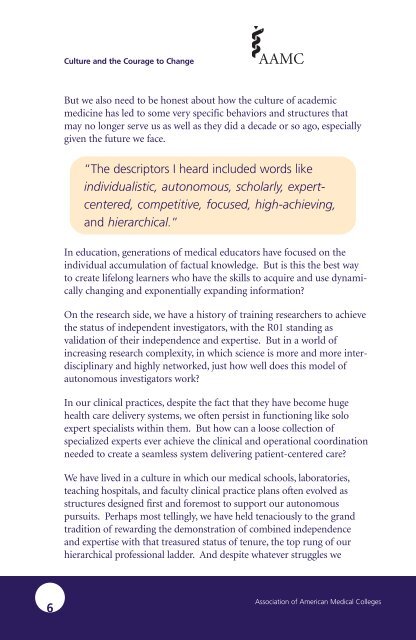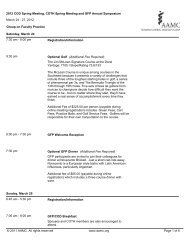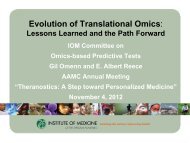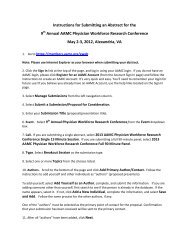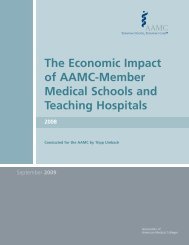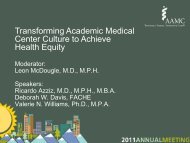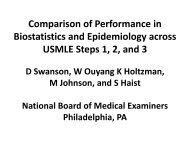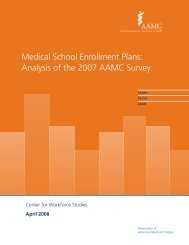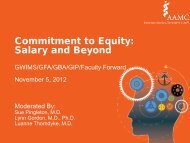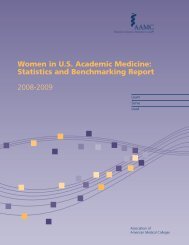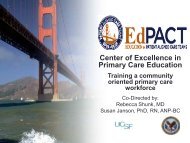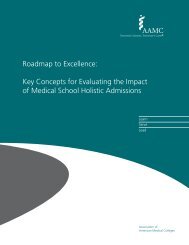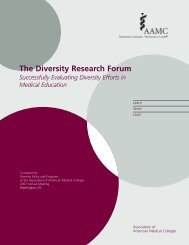Culture and the Courage to Change - Member Profile - AAMC
Culture and the Courage to Change - Member Profile - AAMC
Culture and the Courage to Change - Member Profile - AAMC
Create successful ePaper yourself
Turn your PDF publications into a flip-book with our unique Google optimized e-Paper software.
<strong>Culture</strong> <strong>and</strong> <strong>the</strong> <strong>Courage</strong> <strong>to</strong> <strong>Change</strong>But we also need <strong>to</strong> be honest about how <strong>the</strong> culture of academicmedicine has led <strong>to</strong> some very specific behaviors <strong>and</strong> structures thatmay no longer serve us as well as <strong>the</strong>y did a decade or so ago, especiallygiven <strong>the</strong> future we face.“The descrip<strong>to</strong>rs I heard included words likeindividualistic, au<strong>to</strong>nomous, scholarly, expertcentered,competitive, focused, high-achieving,<strong>and</strong> hierarchical.”In education, generations of medical educa<strong>to</strong>rs have focused on <strong>the</strong>individual accumulation of factual knowledge. But is this <strong>the</strong> best way<strong>to</strong> create lifelong learners who have <strong>the</strong> skills <strong>to</strong> acquire <strong>and</strong> use dynamicallychanging <strong>and</strong> exponentially exp<strong>and</strong>ing information?On <strong>the</strong> research side, we have a his<strong>to</strong>ry of training researchers <strong>to</strong> achieve<strong>the</strong> status of independent investiga<strong>to</strong>rs, with <strong>the</strong> R01 st<strong>and</strong>ing asvalidation of <strong>the</strong>ir independence <strong>and</strong> expertise. But in a world ofincreasing research complexity, in which science is more <strong>and</strong> more interdisciplinary<strong>and</strong> highly networked, just how well does this model ofau<strong>to</strong>nomous investiga<strong>to</strong>rs work?In our clinical practices, despite <strong>the</strong> fact that <strong>the</strong>y have become hugehealth care delivery systems, we often persist in functioning like soloexpert specialists within <strong>the</strong>m. But how can a loose collection ofspecialized experts ever achieve <strong>the</strong> clinical <strong>and</strong> operational coordinationneeded <strong>to</strong> create a seamless system delivering patient-centered care?We have lived in a culture in which our medical schools, labora<strong>to</strong>ries,teaching hospitals, <strong>and</strong> faculty clinical practice plans often evolved asstructures designed first <strong>and</strong> foremost <strong>to</strong> support our au<strong>to</strong>nomouspursuits. Perhaps most tellingly, we have held tenaciously <strong>to</strong> <strong>the</strong> gr<strong>and</strong>tradition of rewarding <strong>the</strong> demonstration of combined independence<strong>and</strong> expertise with that treasured status of tenure, <strong>the</strong> <strong>to</strong>p rung of ourhierarchical professional ladder. And despite whatever struggles we6Association of American Medical Colleges


